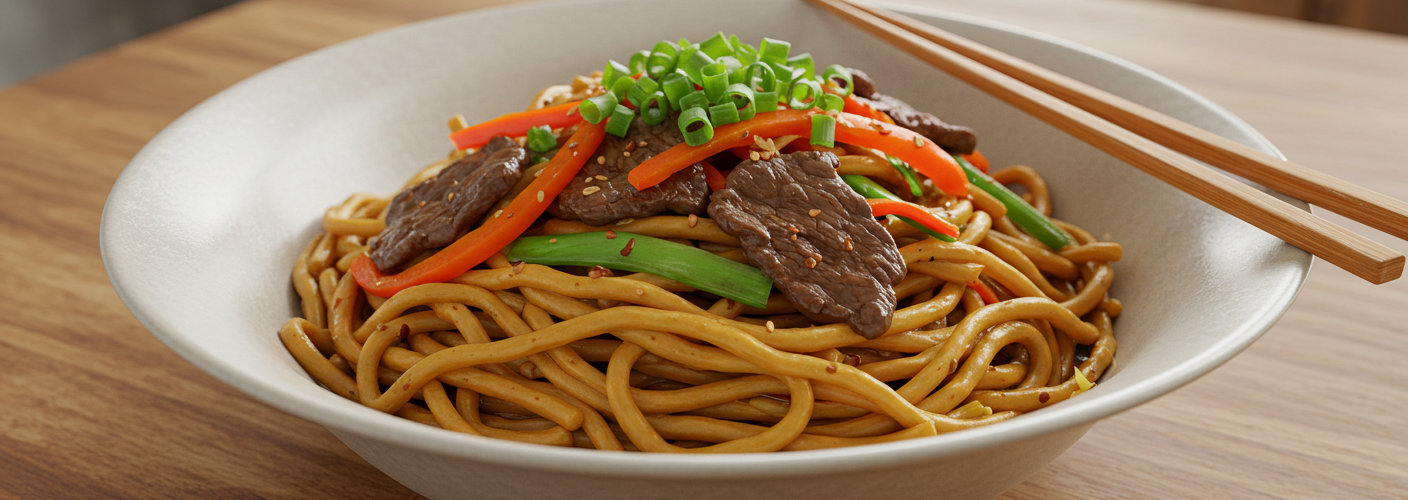If there’s one dish that beautifully encapsulates the rich tapestry of Central Asian cuisine, it’s Lagman. This delectable dish, characterized by its hand-pulled noodles, tender meat, and vibrant vegetables, is a celebration of flavors and textures that transport your taste buds straight to the heart of the region.
The Origin of Lagman
Lagman has deep roots, with its origins tracing back to the Uyghur people and the broader Xinjiang province in China. The name “Lagman” itself derives from the Uyghur word for pulled noodles, which is the foundational element of this dish. Over the years, Lagman has transcended borders, adapting to various cultures and kitchens, particularly in countries like Kazakhstan, Kyrgyzstan, and Tajikistan.
What Makes Lagman Special?
At its core, Lagman is a comforting bowl of pulled noodles served with a savory broth of meat and vegetables. The magic begins with the noodles. Made from a simple dough of flour and water, they are skillfully stretched and pulled until they reach the desired thinness. This technique creates a wonderfully chewy texture that perfectly complements the meat and vegetable toppings.
Typically, Lagman is made with lamb or beef, which is simmered slowly to develop a rich and robust flavor. The meat is often seasoned with a variety of spices, including cumin, coriander, and black pepper, giving it a warm, aromatic quality. As for the vegetables, they can vary widely but commonly include bell peppers, carrots, onions, and tomatoes. The medley of these ingredients creates a colorful dish that is as pleasing to the eye as it is to the palate.
The Serving Style
Lagman is traditionally served in two ways: dry and soup-based. The dry version is characterized by a stir-fried preparation, where the pulled noodles are tossed with the savory meat and vegetable mix, resulting in a hearty, cohesive dish that bursts with flavor. On the other hand, the soup version features the pulled noodles swimming in a fragrant broth, often garnished with fresh herbs like coriander or parsley, which add an extra dimension of freshness.
A Dish for All Occasions
One of the appealing aspects of Lagman is its versatility. It can be enjoyed as a comforting everyday meal or presented at celebratory gatherings and feasts. Families often bond over the process of making Lagman from scratch, with everyone pitching in to pull the noodles and prepare the toppings. It’s a communal dish, a symbol of hospitality and home-cooked goodness.
How to Make Lagman at Home
Making Lagman at home can be a rewarding experience. Start by preparing the dough for your noodles and let it rest. Once rested, the real fun begins as you pull the dough into long, thin strands. Simultaneously, cook your chosen meat in a pot with hot oil, then add in the vegetables, and season to taste. Finally, mix in your pulled noodles, ensuring everything is well-combined.
Conclusion
Lagman is more than just a meal; it’s an experience that tells a story of culture, tradition, and culinary artistry. Whether you enjoy it in a bustling restaurant or prepare it at home with loved ones, Lagman is sure to warm your heart and delight your taste buds. So, why not embark on this culinary adventure and try your hand at this delightful dish?




Add comment